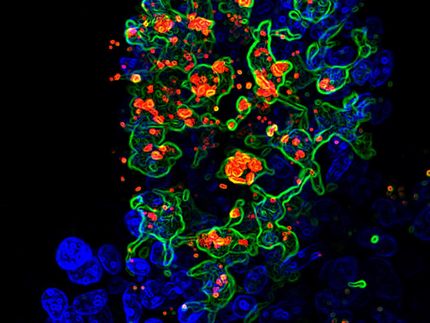In the bacterial world of your mouth, nurture wins out over nature
Advertisement
The human mouth is home to a teeming community of microbes, yet still relatively little is known about what determines the specific types of microorganisms that live there. Is it your genes that decide who lives in the microbial village, or is it your environment? In a study published in Genome Research, researchers have shown that environment plays a much larger role in determining oral microbiota than expected, a finding that sheds new light on a major factor in oral health.
Our oral microbiome begins to take shape as soon as we are born and sees a myriad of bacteria introduced to our mouth during childhood and later in life, yet little is known about whether nature (your genes) or nurture (your environment) has a stronger influence. Because of variations in the oral microbiome in both health and diseases like bacteremia and endocarditis, understanding the determinants of oral microbiota communities might lead to better prevention and treatment strategies.
In this study, a team of researchers from the University of Colorado sequenced the microbial DNA present in the saliva samples of a cohort of twins, and matched the DNA sequences in a database to determine which types of bacteria were present in each individual. In their data set, they utilized samples that were gathered over a decade of adolescence from the same individuals to observe how the salivary microbiome changes with time.
By comparing the salivary microbiomes of identical twins, who share the same genetic make-up and live in a common environment, the group found that their salivary microbiomes were not significantly more similar than the salivary microbiota of fraternal twins, who share only half of their genes, suggesting genetic relatedness is not as important as environment. “The conclusion that genetic relatedness plays at most only a small role in microbial relatedness was really a surprise,” said Dr. Ken Krauter, senior author of the study.
“We were also intrigued to see that the microbiota of twin pairs becomes less similar once they moved apart from each other,” added Simone Stahringer, first author of the study, explaining further evidence for the influence of environment on oral microbiota. Interestingly, in the samples obtained from the same individuals over time, they found that the salivary microbiome changed the most during early adolescence, between the ages of 12 and 17. This suggests that factors such as puberty or prominent behavioral changes at this age might be important.
Krauter explained that their work uncovered another unexpected finding, that there is a core community of bacteria that are present in nearly all humans studied. “Though there are definitely differences among different people, there is a relatively high degree of sharing similar microbial species in all human mouths.”
The authors suggested that this report has established a framework for future studies of the factors that influence oral microbial communities. “With broad knowledge of the organisms to expect to find in mouths,” said Krauter, “we can now better understand how oral hygiene, environmental exposure to substances like alcohol, methamphetamines and even foods we eat affect the balance of microbes."
Original publication
Stahringer SS, Clemente JC, Corley RP, Hewitt J, Knights D, Walters WA, Knight R, Krauter KS; "Nurture trumps nature in a longitudinal survey of salivary bacterial communities in twins from early adolescence to early adulthood."; Genome Res.
















































